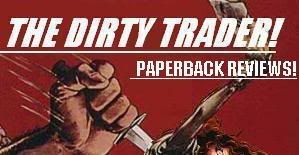In 1988, my half-brother visited his grandparents in Ireland, they made a trip to London, and he brought me back a souvenir copy of
Dragon's Claws #2. It seemed like a rare and exotic artifact, but as it turned out, the Marvel UK series was being distributed concurrently in the U.S. direct market. We both had access to comic shops in 1989, and between us collected the entire ten issue series. I doubt it would read exceptionally well today, but at the time its gritty, violent dystopian future of death sport and government malfeasance was exciting to a teenager gravitating toward more aggressive fantasies. Death's Head had a few single page comic strips and a guest appearance in the book, and I liked him, so I picked up
The Life and Times of Death's Head trade paperback when it turned up at a B. Dalton Booksellers a year or so later. It was an interesting read, given that the character had debuted in Transformers and Doctor Who comics that weren't licensed for republication, but there were a lot of nudge-nudge/wink-wink asides packed in to reference them. My brother also bought a few issues of
Knights of Pendragon, but I don't think it clicked with either of us.
A revamp mini-series,
Death's Head II, was solicited in 1991 but delayed until 1992. Very influenced by
Terminator 2: Judgment Day, the story was action-packed time travel liquid metal nonsense drawn in a more commercial take on the Biz style, perfect for the times. I was hooked, and when Marvel UK rolled out a new wave of titles to exploit the speculator boom, I sampled the majority of them.
Hell's Angel had art by
Dragon's Claws Geoff Senior which I enjoyed very much, but none of the bleak humor of the prior series and tedious seemingly monthly X-Men tie-ins, so I jumped after a few issues. The
Death's Head II ongoing series initially retained the flashy art of Liam Sharpe, but lost all its momentum from the mini-series due to tedious seemingly monthly X-Men tie-ins, so I jumped after a few issues.
Warheads was closer to the vibe of
Dragon's Claws with its dimension hopping mercenaries and sci-fi/action/horror vibe, though the main draw was the junkie fever dream art of Gary Erskine. He's still likely the only artist to ever sneak a silhouetted scrotum into a Marvel comic, but he left the book very early on. Then there were the tedious X-Men/Marvel US tie-ins, so I jumped after a few issues. You might notice a pattern emerging, and I did too. Despite some very pleasing early art by Gary Frank, I only gave
Motormouth and the obligatory Marvel US guest stars a one issue trial, and skipped
Digitek and the
Knights of Pendragon revamp entirely. It didn't help that they were pumping out ever increasing amounts of obvious low rent garbage to fill the stands with polybagged #1s, including about half a dozen variations on Death's Head II. My last dance with the line was
MyS-TECH Wars #1, which despite the talents of Dan Abnett and Bryan Hitch couldn't overcome the toxicity of the line or the unnecessary inclusions of Marvel US characters.
Elements of the Marvel UK books have popped up again in recent years, mostly under nostalgic British creators. Andy Lanning, recently "divorced" from his decades long writing partnership with Abnett, pitched a revival mini-event to editor Stephen Wacker for 2013. Joined by new co-writer Alan Cowsill, Lanning scripted four of seven one-shots that made up "Revolutionary War," a play on Dez Skinn's "Marvel Revolution" of the UK branch in the 1970s. I'm not sure how they would work for the uninitiated, but as a reader who has brushed up against these concepts off and on for a quarter century with a reserve of nostalgia built up, I was entertained by the lot.
Revolutionary War: Alpha started things off with the return of Captain Britain and Pete Wisdom of the late
MI13 series, as they learn of a retcon used to write the old UK heroes off the stage, and the need to reactive several of them. There's a nod to the classic '80s run of Captain Britain, but this is mostly set-up with pedestrian art by Rich Elson.
Dark Angel comes up next, under a title change necessitated by a legal settlement with the Hell's Angels biker club back in the '90s. Kieron Grant reestablished the anti-heroine here for a string of appearances in
Iron Man, including circumstances surrounding the her that use a demonic contract to reflect the financial crisis of 2008. It's occasionally too cheeky for its own good, but mostly works well, especially with the appealing art of Dietrich Smith.
Rob Williams takes the piss out of
Knights of Pendragon, a very British thing to do, but it did nothing to endear me any further to that property. The art by Will Sliney was fine enough, but wasn't conductive to the humor of the script, such as it was. Fell flat all around.
Death's Head II was the closest to its origins in tone, given that it had a co-creator on board, a recognizable supporting cast, and prominently featured the first Death's Head in character. The only fault here is the art of Nick Roche, rubbery in the manner of later '90s output. I completely passed on the first run of
Super Soldiers, and once again Rob Williams gives me no cause to regret that. The art by Brent Anderson is so bad that I wonder if its the same guy I know by that name, or if he maybe developed some sort of issue with his drawing hand. Tom Palmer's inks may also be to blame, as he's well past the point of being viable on a full length comic. However, there's a poignancy here as a sense of permanent doom starts to seep into the proceedings.
Glenn Dakin wrote an issue of
Motormouth back in the day, and emphasizes the lighter tone of that run in contrast to the depressing domestic squalor of current circumstances with the aid of a semi-chibi opening sequence. Ronan Cliquet's art is a bit loose at times in the story proper, oddly showing influences as diverse as Peter Snejbjerg and Mike Deodato, but it serves the material well.
Warheads is heavy on exposition, revisiting the dooming scenario of the book's team while spelling out most of the plot meant to unite these one-shots. Erskine returns to give the period details punk authenticity, but he's also smoothed out and lightened up over the years, so the art doesn't reach the old highs. It's a solid yarn with consequences that wouldn't typically be a legitimate issue for mainstream characters, precisely because there isn't another creative team coming in next month to effect a reversal. It's the high point of the book, meaning
Revolutionary War: Omega whimpers out by comparison. The same creative team is on the bookends, though Rich Elson's art is much improved by drawing the legions of Hell over spooks in suits. There's an oh-so-appropriate single page shoehorning in Marvel US heroes, but with the stakes established by
Warheads, the resolution seems too pat and underwhelming. Regardless, as a whole I had fun on this ride.

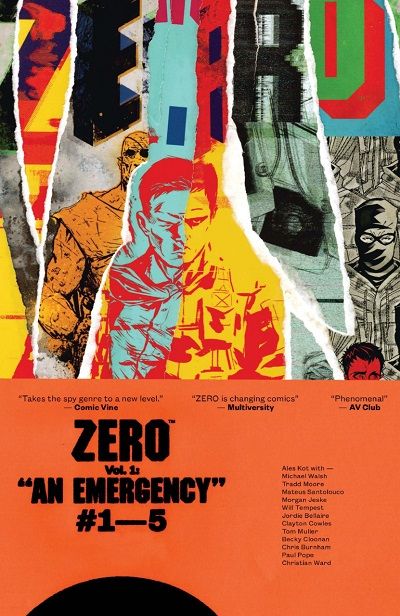 Back in 1993, when Brian Michael Bendis was a nobody who styled his name with an "Æ" because he was insufferable, he produced a two issue mini-series through Caliber called Fire. It was an Americanized version of La Femme Nikita, like Point of No Return, but if the boyfriend were the spy. It was all about secret training facilities that churned out amoral cutthroat agents who were kept in the dark and fed shit by their ruthless superiors who would pit them against one another or leave them to rot somewhere as it suited their agenda. Twenty years later, Zero is just like that, except with more Bond-influenced Steranko sci-spy elements, like a less sexy version of Fraction, Ba & Moon's Casanova from a few years ago. I bring all this up because the cover of the Zero trade paperback has all these hyperbolic blurbs about how it is "changing comics" and "takes the spy genre to a new level" and yeah, shut up, no it doesn't. Let's just enjoy this for what it is.
Back in 1993, when Brian Michael Bendis was a nobody who styled his name with an "Æ" because he was insufferable, he produced a two issue mini-series through Caliber called Fire. It was an Americanized version of La Femme Nikita, like Point of No Return, but if the boyfriend were the spy. It was all about secret training facilities that churned out amoral cutthroat agents who were kept in the dark and fed shit by their ruthless superiors who would pit them against one another or leave them to rot somewhere as it suited their agenda. Twenty years later, Zero is just like that, except with more Bond-influenced Steranko sci-spy elements, like a less sexy version of Fraction, Ba & Moon's Casanova from a few years ago. I bring all this up because the cover of the Zero trade paperback has all these hyperbolic blurbs about how it is "changing comics" and "takes the spy genre to a new level" and yeah, shut up, no it doesn't. Let's just enjoy this for what it is.

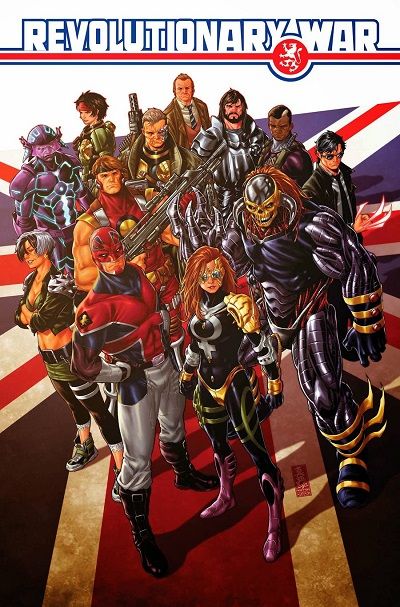
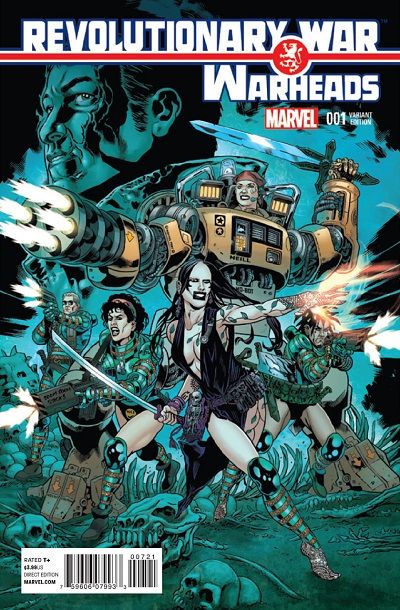
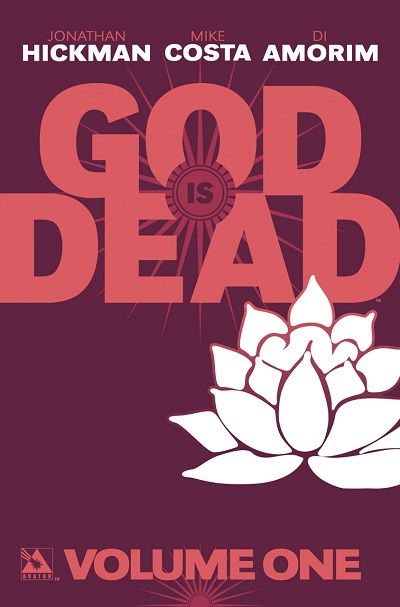 God is not dead. It's actually a second coming, not of Jesus, but of oodles of ancient deities of world myth clashing like Mortal Kombat with global consequences.
God is not dead. It's actually a second coming, not of Jesus, but of oodles of ancient deities of world myth clashing like Mortal Kombat with global consequences.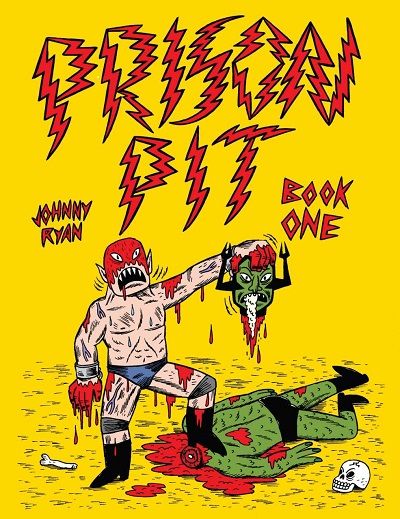 I've had limited exposure to Johnny Ryan, mostly through Angry Youth Comix, which wasn't my bag. However, Tucker Stone has talked up his graphic novel series Prison Pit, so I opted to give it a try. Johnny Ryan still isn't my bag. A badass alien criminal who dresses like a luchador gets sentenced to a truncated life on an extremely hostile penitentiary planet. I don't recall if he's ever given a name, and it's unimportant. This guy commits and has committed upon him acts of heinous violence that usually bring in some element of wild alien biology as a complication in the action. Animated tentacle intestines, exo-suits made from mounds of ejaculated sperm... that sort of thing. There isn't much plot or dialogue, so you can burn through the initial 120 page volume inside a few minutes. If you're into unpretentious, boyish avenues to ultraviolence or are curious how Jack Kirby might have handled a symbiote that fellates its master while he's covered in the blood and gore of their opponents, this might be for you. To the rest of us, it's juvenile, amateurish, uninvolved, unevolved and all around ridiculous.
I've had limited exposure to Johnny Ryan, mostly through Angry Youth Comix, which wasn't my bag. However, Tucker Stone has talked up his graphic novel series Prison Pit, so I opted to give it a try. Johnny Ryan still isn't my bag. A badass alien criminal who dresses like a luchador gets sentenced to a truncated life on an extremely hostile penitentiary planet. I don't recall if he's ever given a name, and it's unimportant. This guy commits and has committed upon him acts of heinous violence that usually bring in some element of wild alien biology as a complication in the action. Animated tentacle intestines, exo-suits made from mounds of ejaculated sperm... that sort of thing. There isn't much plot or dialogue, so you can burn through the initial 120 page volume inside a few minutes. If you're into unpretentious, boyish avenues to ultraviolence or are curious how Jack Kirby might have handled a symbiote that fellates its master while he's covered in the blood and gore of their opponents, this might be for you. To the rest of us, it's juvenile, amateurish, uninvolved, unevolved and all around ridiculous. 